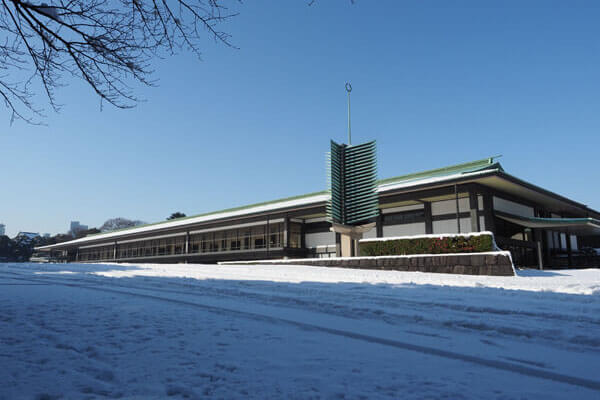Visit Guide
'Sento Palace’ means the residence for the emperor emeritus, and ‘Omiya Palace’ means the one for his consort, the empress emerita. In 1630, these two residences were built at the present site which is adjacent to the Kyoto Imperial Palace for Emperor Emeritus Gomizunō and his consort. Destroyed repeatedly by fire, the buildings were rebuilt each time. The last major fire, which occurred in 1854, burned down all the main buildings. In 1867, Omiya Palace was rebuilt and presently it is used as accommodations for Their Majesties the Emperor and Empress. The main building of Sento Palace was not rebuilt.
Its elegant garden contains two large ponds and two tea house pavilions. A garden path leads around the North Pond and crosses a canal connecting the North and South Ponds by an earthen bridge, and leads around the South Pond. The South Pond is famous for its graceful bank lined with flat oval pebbles. In spring, cherry blossoms, wisteria trellis and azaleas can be enjoyed. In autumn, the garden is ablaze with autumn leaves.
Information of the Facilities
Click on a photo for detailed information
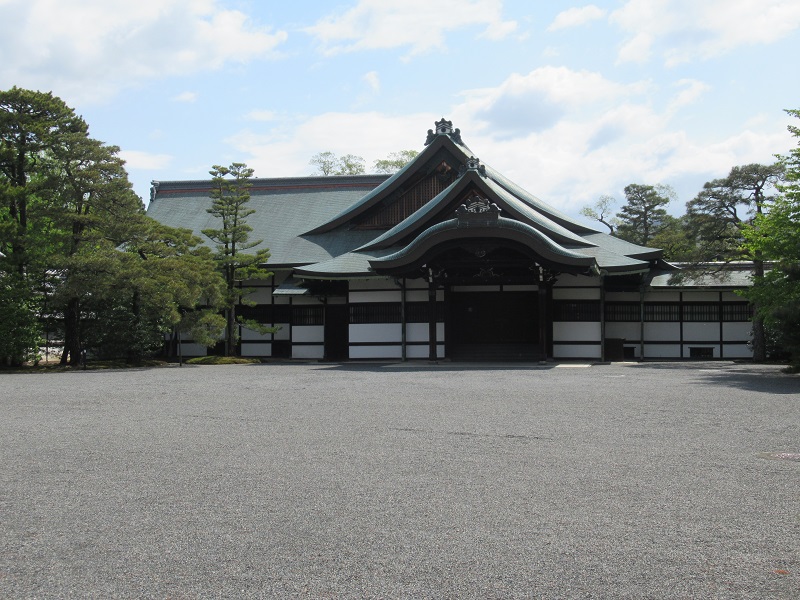 Okurumayose (Carriage Porch)
Okurumayose (Carriage Porch) 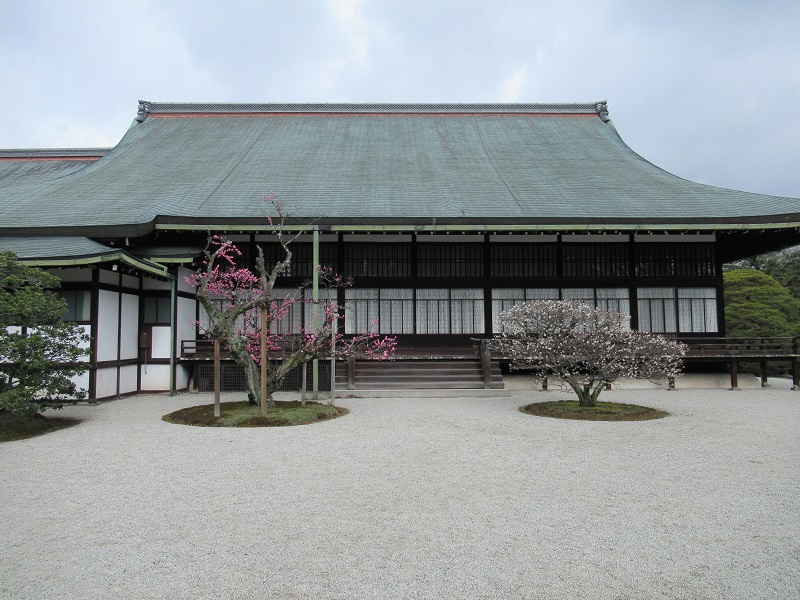 Otsunegoten(Residential Palace)
Otsunegoten(Residential Palace) 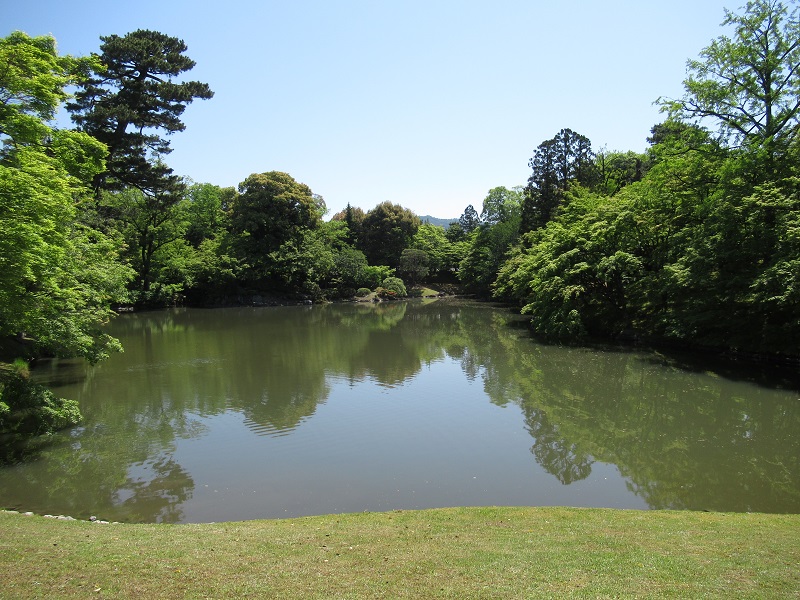 Kitaike (North Pond)
Kitaike (North Pond) 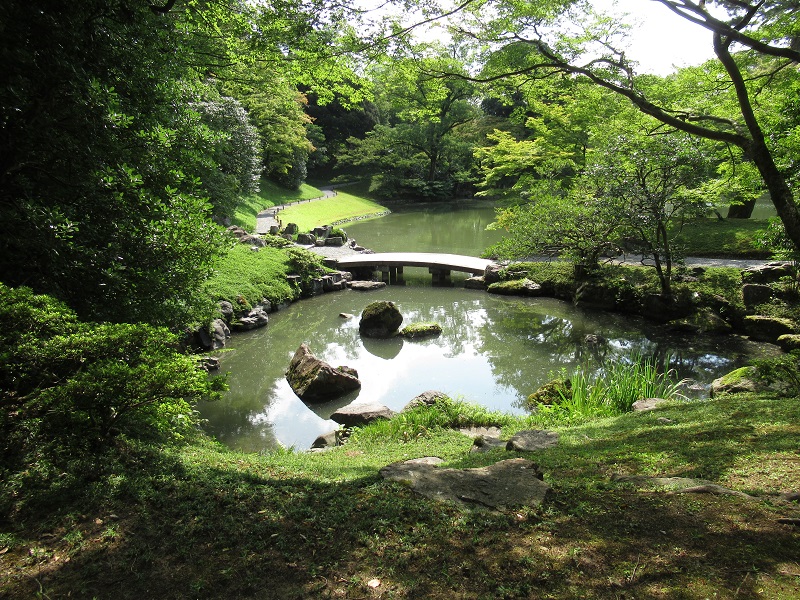 Rokumaibashi (Flat Six Slab Stone Bridge)
Rokumaibashi (Flat Six Slab Stone Bridge) 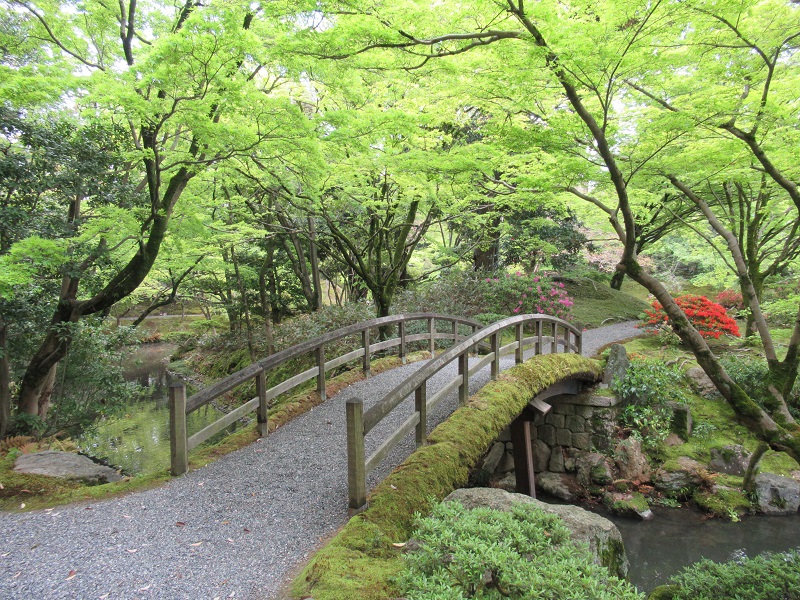 Tsukabashi Bridge・Kitaike Yatsuhashi (Bridge of Zigzag Planks over North Pond)
Tsukabashi Bridge・Kitaike Yatsuhashi (Bridge of Zigzag Planks over North Pond) 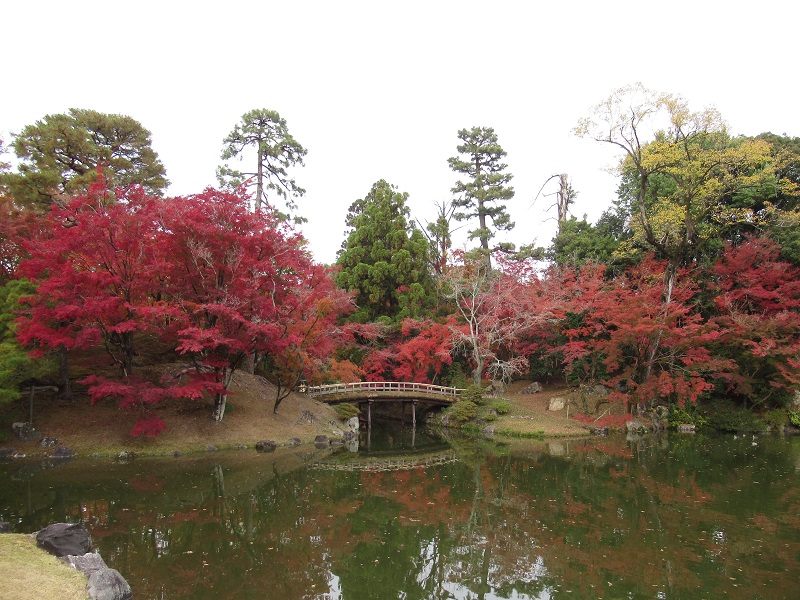 Momijibashi(Maple Bridge)・Momijiyama (Maple Hillock)
Momijibashi(Maple Bridge)・Momijiyama (Maple Hillock)
 Tosabashi Bridge・Otaki Waterfall
Tosabashi Bridge・Otaki Waterfall 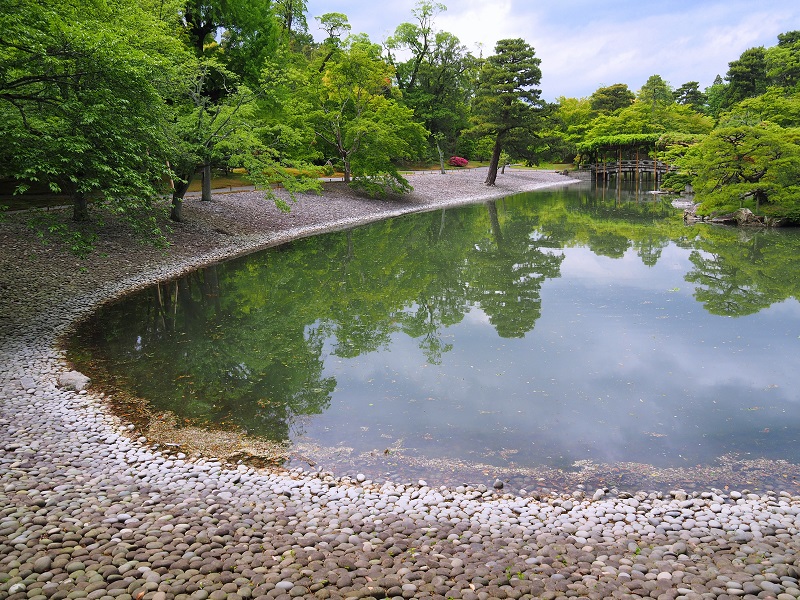 Yatsuhashi (Bridge of Zigzag Planks)・Minamiike (South Pond)
Yatsuhashi (Bridge of Zigzag Planks)・Minamiike (South Pond) 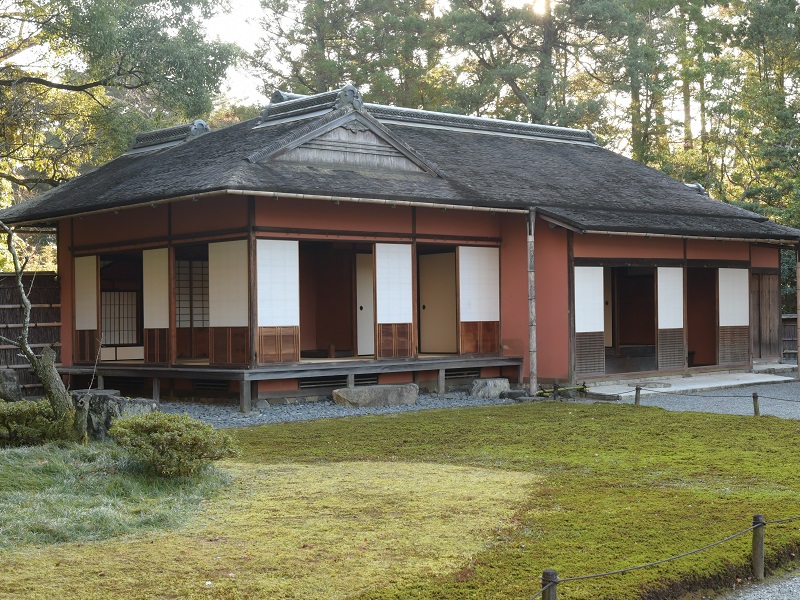 Seikatei Pavilion
Seikatei Pavilion  Yūshintei Pavilion
Yūshintei Pavilion
 Traffic Access
Traffic Access

Access
- Karasuma Line, Kyoto City Subway: 15 minutes from Marutamachi Station
- Kyoto City Bus: 10 minutes from Furitsuidai-byoin-mae bus stop
- Keihan Railway: 20 minutes from Jingu-Marutamachi Station
 Meeting Spot for the Walk-in Registration
Meeting Spot for the Walk-in Registration

 Visitor Information Map
Visitor Information Map

 Tour Course
Tour Course
- Okurumayose (Carriage Porch)
- Otsunegoten(Residential Palace)
- Kitaike(North Pond)
- Rokumaibashi(Flat Six Slab Stone Bridge)
- Tsukabashi Bridge・Kitaike Yatsuhashi (Bridge of Zigzag Planks over North Pond)
- Momijibashi(Maple Bridge)・Momijiyama (Maple Hillock)
- Tosabashi Bridge・Otaki Waterfall
- Yatsuhashi(Bridge of Zigzag Planks)・Minamiike(South Pond)
- Seikatei Pavilion
- Yūshintei Pavilion
The Imperial Palace, Kyoto Imperial Palace, Kyoto Sento Imperial Palace, and Imperial Villas
Visit Guide
